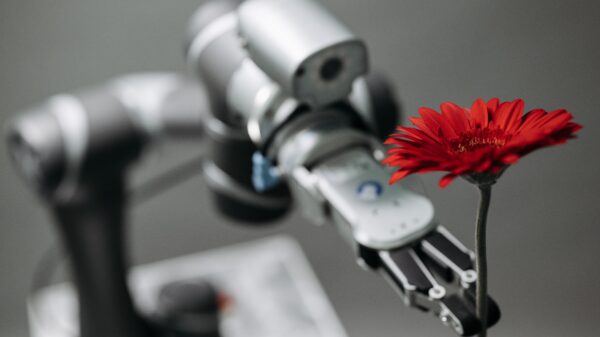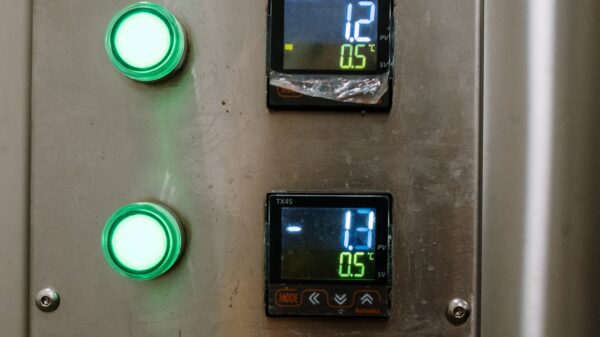
Welcome to the age of automation, where technology reigns supreme and convenience is just a click away. From self-driving cars to smart homes, our lives have become intertwined with machines that seem to offer endless possibilities. But as we bask in the glory of these modern wonders, it’s crucial to pause and reflect on the price we pay for this dependence on technology. In this blog post, we delve into the world of automation blues – exploring its drawbacks and questioning whether our reliance on technology is truly worth it in the end. Join us as we unravel the hidden dangers behind this seemingly utopian façade and discover how striking a balance between human ingenuity and technological innovation might be key to preserving our humanity in an increasingly automated world.
Introduction: What is Automation?
We often hear about the many benefits of automation, but what exactly is it? Automation is the use of technology to perform tasks that would otherwise be done by human beings. This can include everything from simple tasks like turning off the lights when we leave a room, to more complex ones like booking a vacation or filing our taxes.
While automation can be incredibly convenient, there are also some drawbacks. One downside is that we can become too reliant on technology and lose important skills in the process. For example, if we always use GPS to get around, we may eventually forget how to read a map. Another potential problem is that automated systems can malfunction, leaving us stranded or worse. Automating too much can lead to a loss of jobs as machines increasingly take over for humans.
Automation can be extremely helpful, but we should be aware of its potential downsides as well.
Disadvantages of Automation
Though there are many advantages to automation, there are also several disadvantages. First, as with any technology, automation can fail. When it does, it can cause major disruptions in the workplace and in people’s lives. Second, automation can lead to job loss. As machines increasingly takeover tasks that humans have traditionally done, there will be fewer jobs available for people. This could lead to increased unemployment and underemployment, and could exacerbate social inequality. Automated systems are often opaque and complex, making them difficult for people to understand and control. This lack of understanding can lead to errors and unforeseen consequences.
– Loss of Jobs due to Automation
As our world increasingly becomes more digital, many jobs that once required human hands are now being performed by machines. This trend towards automation can be seen in a variety of industries, from retail to manufacturing. While there are certainly some advantages to this shift, it also comes with a number of disadvantages – chief among them being the loss of jobs for humans.
When a company decides to automate its operations, the first step is often to lay off employees who were performing the tasks that will now be done by machines. This can lead to widespread unemployment and economic hardship for those affected. In addition, it can also create resentment and mistrust between workers and management.
What’s more, automated systems are not always reliable. They can break down or malfunction, leaving companies in a difficult position. This can lead to even more job losses as companies scramble to find ways to fix the problems.
The automation of our world comes with both upsides and downsides. While it can make things easier and more efficient, it also has the potential to do harm. We must be careful as we move forward into this new era to make sure that we don’t sacrifice too much in the name of progress.
– Reduced Quality
The increased dependence on technology has led to a decrease in the quality of work. This is because people are relying on machines to do the work for them, instead of doing it themselves. This has led to a decrease in the quality of work, as well as the skills of the workers.
– High Start-up Costs
The high start-up costs associated with automation can be a major barrier to its adoption, especially for small businesses. Automation requires significant up-front investment in hardware and software, as well as training for employees to use the new systems. This can all add up to a hefty price tag that may be difficult for some companies to justify.
– Increased Risk of Error due to Automation
When we rely too heavily on technology, we open ourselves up to a greater risk of error. We might forget how to do things the old-fashioned way, or we might become too reliant on the machines and not catch errors that they make.
This was recently demonstrated in a study conducted by the University of Michigan, which found that people who use spell checker are more likely to make spelling errors than those who don’t. The researchers attributed this to the fact that spell checker users have come to rely on the technology to catch their mistakes, rather than proofreading their work themselves.
While this particular study focused on spelling errors, it’s easy to see how the same principle could apply to other types of errors as well. If we’re not careful, we can end up making more mistakes overall when we depend too much on technology.
– Security Risks
As our lives become more and more intertwined with technology, we become increasingly vulnerable to its dangers. One of the most significant dangers of technology is its potential to compromise our security.
There are a number of ways in which technology can pose a security risk. For example, if we rely on technology for our communication, any weakness in the system could allow someone to intercept our messages or even impersonate us. Similarly, if we store sensitive information on our computers or other devices, a hacker could gain access to this data and use it for nefarious purposes.
In addition to the risks posed by specific technologies, there is also the danger that our dependence on technology will make us less capable of dealing with real-world threats. For instance, if we rely on automation to handle security tasks, we may be ill-prepared to deal with a physical attack.
Ultimately, it is important to be aware of the risks associated with technology and take steps to minimize them. This may include using strong passwords, encrypting sensitive data, and being cautious about what information you share online. By taking these precautions, we can help keep ourselves safe in an increasingly connected world.

– Unrealistic Expectations
In today’s world, we’ve become accustomed to technology making our lives easier. We rely on computers to do our work, schedule our appointments, and even entertain us. But what happens when our dependence on technology starts to outweigh its benefits?
For one thing, unrealistic expectations can develop. We might expect a piece of software to be able to do everything we need it to, or for a website to never crash or experience any downtime. When these things don’t happen, we can become frustrated and even angry.
Another problem is that we can start to take technology for granted. We might not think twice about using a GPS to get around town or ordering products online instead of going to a store. But when something does go wrong with our computer or smartphone, it can throw our whole day off balance.
Too much dependence on technology can make us less capable of dealing with real-world problems. If we’re used to getting everything we need from a screen, we might not know how to fix a broken appliance or deal with a difficult customer service representative. Learning how to troubleshoot and problem-solve without tech support is an important skill to have in the modern world.
– Loss of Human Interaction
In our increasingly digital world, it’s easy to forget the importance of human interaction. We often take for granted the face-to-face interactions we have with friends, family, and co-workers. However, research has shown that human interaction is essential for our mental and physical health.
One of the dangers of automation is that it can lead to a loss of human interaction. When we rely on machines to do our work for us, we miss out on important social interactions. This can have a negative impact on our mental health, as isolation and loneliness are major risk factors for depression and anxiety. In addition, a lack of human interaction can also lead to physical health problems such as obesity and heart disease.
So next time you’re tempted to send a text message instead of calling a friend or ordering dinner online instead of going out to eat, remember that human interaction is important for your health and well-being. Make an effort to connect with others in person, and you’ll be glad you did.
– Changes in Workplace Culture
The workplace is evolving. With the rise of automation and technology, the way we work is changing. There is a growing dependency on technology, which has its own set of drawbacks.
One major drawback is the potential for job loss. As machines increasingly take over tasks that have traditionally been done by humans, there is a risk that many jobs will simply disappear. This could lead to mass unemployment and a whole host of social problems.
Another downside of our dependence on technology is that it can make us less efficient. We become reliant on gadgets and gizmos to get things done, when in reality we may be able to do them just as well (or even better) without all the bells and whistles. This can lead to wasted time and money as we fiddle with unnecessary technology instead of getting on with our work.
There is the issue of security. With more and more sensitive information being stored online or transmitted via email, there is a greater risk of it falling into the wrong hands. Hackers are becoming increasingly sophisticated and if businesses are not careful, they could find themselves in hot water very quickly.
All these factors need to be considered when deciding how much to rely on technology in the workplace. There are both advantages and disadvantages to automation and businesses need to weigh up these carefully before making any decisions.
– Negative Impact on the Environment
As our dependence on technology grows, so does our negative impact on the environment.
Technology has always had an impact on the environment, but as it becomes more and more integrated into our lives, that impact is becoming more and more negative. From the production of electronic devices to their eventual disposal, the environmental cost of our dependence on technology is high.
One of the biggest problems is e-waste. Electronic waste is one of the fastest growing types of waste in the world, and it’s estimated that only 20% of it is recycled. The rest ends up in landfills, where it can leach harmful chemicals into the ground water or be burned, releasing toxins into the air.
The mining of minerals for electronics is also having a devastating effect on the environment. In Australia, for example, uranium mining has led to the destruction of large tracts of land and THE POISONING OF WATERWAYS. And in Africa, Coltan mining (used in cell phones and other electronic devices) has been linked to deforestation and human rights abuses.
Our dependence on technology is also contributing to climate change. The electricity needed to power all our devices comes from power plants that burn fossil fuels, leading to emissions of greenhouse gases that are causing the Earth’s temperature to rise.
It’s not all doom and gloom though – there are things we can do to reduce our negative impact on the environment. We can recycle our old electronics
– Dependence on Technology
As our dependence on technology increases, we become more vulnerable to its failures. We rely on technology for everything from communication to transportation, and when that technology fails, it can have a major impact on our lives.
In recent years, we’ve seen a number of high-profile failures of technology infrastructure, from power outages to data breaches. These failures can be costly and disruptive, and they underscore the importance of having backup plans in place.
Dependence on technology can also lead to a false sense of security. We may believe that because we have access to information at our fingertips that we are protected from harm, but this is not always the case. In reality, our reliance on technology can make us more vulnerable to attack.
We need to be aware of the risks associated with our dependence on technology and take steps to mitigate those risks. One way to do this is to diversify our reliance on different types of technologies. For example, if we rely heavily on one type of communication system, we should have a backup plan in place in case that system fails.
Ultimately, our dependence on technology is likely here to stay. But by being aware of the risks and taking steps to mitigate them, we can minimize the impact of technological failures on our lives
Conclusion
Automation has certainly made life much easier for many of us. But as our reliance on technology increases, so does the potential for problems that come with it. To ensure that we can make the most out of automation without being negatively impacted by its drawbacks, it is important to understand both the pros and cons of relying too heavily on technology in our lives and take steps to mitigate any risks associated with it. With a balanced approach to using technology, we can make sure that automation remains an asset rather than a hindrance in our day-to-day lives.







